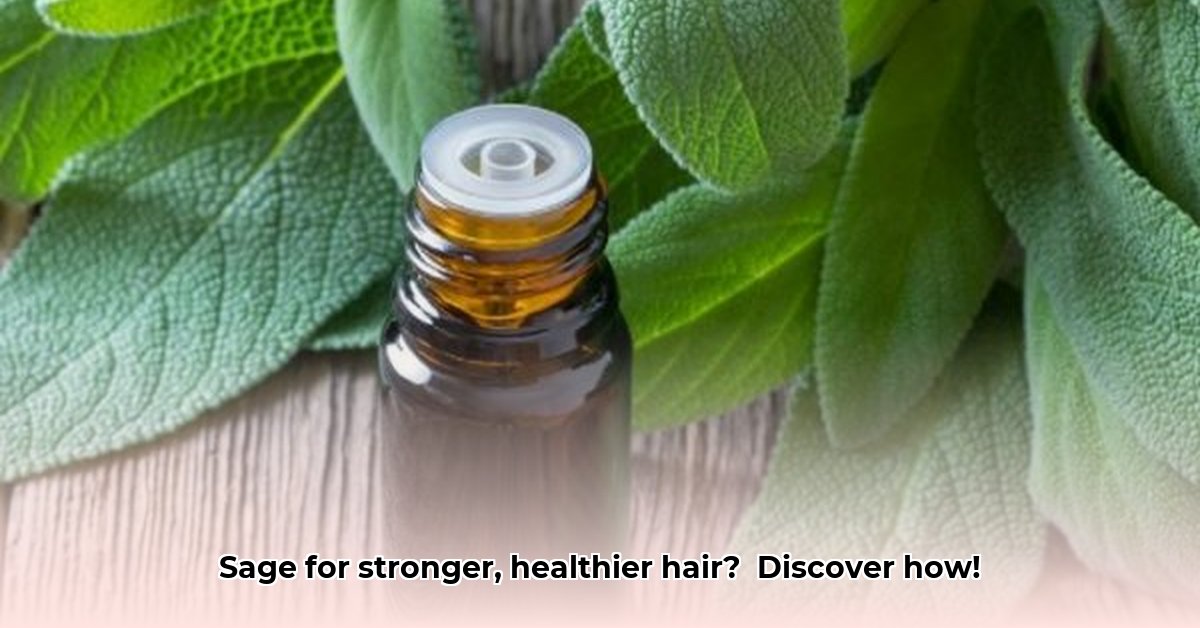
Sage, a culinary herb with a rich history, is also gaining traction as a natural hair care remedy. But does the hype hold up to scientific scrutiny? This review examines the evidence behind sage's potential benefits for your hair, guiding you through safe and effective application methods. We'll explore whether sage can truly enhance hair growth, boost shine, combat dandruff, and improve overall hair health. Let's dive in and discover the truth behind this ancient remedy.
Benefits of Sage for Hair: A Critical Review
Sage's purported benefits for hair stem from its chemical composition, particularly compounds like beta-sitosterol and tannins. While these compounds show promise in laboratory settings, it’s crucial to acknowledge that much of the current evidence supporting sage's hair benefits is anecdotal or based on limited studies. We need more robust, large-scale research to solidify these claims.
Can Sage Stimulate Hair Growth?
Many believe sage promotes hair growth, attributing this to potential effects on hair follicles. Some studies suggest that beta-sitosterol, a component of sage, might inhibit 5-alpha reductase, an enzyme linked to hair loss. However, direct evidence linking sage to significant hair regrowth remains limited. More research is needed to confirm this promising potential. Is it a miracle cure? Not yet! But it shows promise.
Sage and Dandruff: A Natural Solution?
Sage possesses antimicrobial and anti-inflammatory properties, suggesting it could combat the bacteria and fungi often associated with dandruff. A soothing sage tea rinse might help alleviate itching and flaking. However, for severe or persistent dandruff, consulting a dermatologist is essential. Sage can be a helpful complement to existing treatments but not a replacement. Have you struggled with dandruff? A sage rinse might offer some relief.
Shine, Strength, and Texture: Fact or Fiction?
Many users report improved hair shine and texture following sage treatments. This enhanced appearance might result from sage's conditioning and strengthening properties. The visual observations are encouraging, but more scientific data is necessary to confirm these benefits quantitatively. Are you looking for shinier, stronger hair? Sage might be worth a try, but manage your expectations.
Weighing the Pros and Cons of Using Sage for Hair
Before incorporating sage into your hair care routine, consider these factors:
| Aspect | Pros | Cons |
|---|---|---|
| Potential Benefits | May strengthen hair, potentially slow thinning, may help with dandruff, might improve shine & texture | Limited scientific evidence; effects may vary greatly. |
| Safety | Generally safe for topical use; natural ingredient | Possible allergic reactions; always test on a small area first; dilute essential oils |
| Ease of Use | Simple rinses and masks are easy to prepare at home | Requires time and consistency; results may not be immediate or dramatic. |
| Cost | Relatively inexpensive compared to many commercial hair products | May require some experimentation to find the best method for your hair type |
How to Use Sage for Hair: A Practical Guide
Remember: Always perform a patch test before applying any sage product to your entire scalp and hair.
1. Sage Tea Rinse:
- Steep 1-2 tablespoons of dried sage leaves in 1 cup of boiling water for 15-20 minutes.
- Strain the tea and let it cool completely.
- After shampooing and conditioning, pour the cooled tea over your hair, massaging it into your scalp.
- Let it sit for 5-10 minutes, then rinse thoroughly with cool water. Use 2-3 times a week.
2. Sage Essential Oil Treatment (Dilute!):
- Always dilute sage essential oil with a carrier oil (e.g., jojoba, coconut, argan). A good ratio is 2-3 drops of sage oil per tablespoon of carrier oil.
- Apply the diluted mixture to damp hair and scalp.
- Leave it on for 30 minutes, then shampoo and condition. Use once or twice a week.
3. DIY Sage Hair Mask:
- Steep dried sage in boiling water, cool, and strain.
- Combine the sage tea with ingredients like honey or avocado for added benefits.
- Apply to hair and scalp, leave on for 30 minutes, and rinse thoroughly. Use once a week.
Choosing and Sourcing Your Sage
Opt for high-quality, organic sage (Salvia officinalis) from reputable sources that prioritize sustainable practices. While other sage varieties exist, Salvia officinalis is the most commonly used for hair care.
Conclusion: The Verdict on Sage for Hair
Sage shows potential as a natural hair care remedy, particularly for improving shine and potentially managing dandruff. However, more research is crucial to validate claims of hair growth stimulation and other benefits. Used correctly, sage is generally safe, but always prioritize patch testing and consult a dermatologist for any concerns. Embrace sage as a potential addition to your hair care routine, but remember to temper expectations and celebrate the journey to healthier, happier hair.